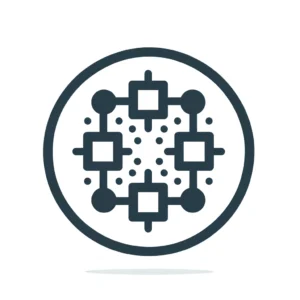“`html
Disclosure: The views and opinions expressed here belong solely to the author and do not represent the views and opinions of the editorial team.
The Challenges of Centralized Platforms for Creators
The ongoing debate around TikTok’s legal status in the United States isn’t solely a matter of national security—it underscores the influence that centralized platforms wield over creators’ livelihoods. With millions of individuals relying on TikTok for income and visibility, the uncertainty surrounding the platform’s future highlights the risks tied to centralized systems. Decisions about monetization, content accessibility, and visibility are often made without creators’ input, directly impacting their careers.
Recurring Issues with Web2 Platforms
Over the years, creators on web2 platforms have faced significant challenges due to abrupt policy changes. For instance:
- The YouTube “Adpocalypse” of 2016-2017 led to widespread demonetization of videos following a shift in advertising policies.
- Patreon’s fee structure changes in 2017 raised concerns among smaller creators, impacting their earnings.
- In 2018, Tumblr’s content policy updates dismantled long-established communities, disrupting user engagement.
- Instagram’s algorithm changes have consistently affected how, and whether, creators’ content reaches their audiences.
These examples reveal a troubling pattern: creators operating on centralized platforms often have little control over the rules and systems that govern their work. Policy shifts, algorithm updates, and monetization decisions are frequently made without transparency or recourse, leaving creators vulnerable to sudden disruptions.
The Case for Decentralized Platforms
While decentralized platforms have yet to achieve mainstream adoption, they offer a promising alternative for creators seeking greater control over their content. Historically, barriers such as high costs, performance limitations, and unintuitive interfaces have slowed adoption. However, ongoing advancements in data storage and delivery are addressing these challenges.
Benefits of Decentralized Systems
Decentralized platforms can empower creators by offering:
- Permanent storage: Ideal for preserving essential content, such as profiles and long-form videos.
- Temporary storage: Enables fast and flexible delivery of dynamic or short-lived data.
- Improved resilience: Protection against censorship, algorithmic suppression, and reliance on centralized gatekeepers.
By combining both permanent and temporary storage models, creators can enhance their digital presence with greater speed, accessibility, and reliability.
What Web3 Platforms Need to Succeed
For decentralized platforms to become viable alternatives, they must prioritize user experience. This includes:
- Seamless integration with tools creators already use.
- Intuitive interfaces that reduce the learning curve.
- Reliable performance to match the expectations set by web2 platforms.
Web3 solutions cannot rely on ideology alone—they must deliver tangible improvements, such as scalable storage, efficient uploads, and workflows that fit seamlessly into creators’ existing processes.
Transparency and Ownership in Decentralized Platforms
One of the key advantages of decentralized platforms is their commitment to transparency and openness. Features such as open-source software, decentralized networks, and user-driven storage solutions reduce the unpredictability often associated with centralized systems. Transparent pricing models and open governance provide creators with the predictability they need to build sustainable businesses.
Decentralized storage solutions, like Arweave, further enhance creator autonomy by ensuring long-term access to content. This model reduces dependence on centralized corporations, mitigates the risk of censorship, and unlocks new monetization opportunities unbound by traditional gatekeepers.
The Way Forward for Creators
The legal uncertainties surrounding TikTok are a reminder of the instability inherent in centralized platforms. As creators continue to face challenges tied to policy shifts and algorithmic changes, the need for decentralized alternatives becomes increasingly urgent. By combining permanent and temporary storage solutions, decentralized platforms can offer creators greater control over their content, distribution, and income streams.
“Decentralization and free speech are not just ideals—they are practical foundations for building more sustainable and creator-centric ecosystems.”
The transition from web2 to web3 won’t happen overnight, but the foundations for a more transparent, autonomous, and sustainable digital economy are being laid today. With platforms like Odysee integrating technologies such as Arweave, the promise of a creator-first future is becoming a reality.
About the Author
Julian Chandra is the founder and CEO of Odysee, a decentralized video platform launched in 2020. With over 7 million monthly active users, it has become the largest blockchain-based video platform globally. Julian previously led strategic partnerships for TikTok in Australia and New Zealand during its early global expansion. His work focuses on empowering creators, bypassing traditional gatekeepers, and promoting transparency. Under his leadership, Odysee has joined the Arweave ecosystem to enhance content permanence and creator autonomy.
“`
























